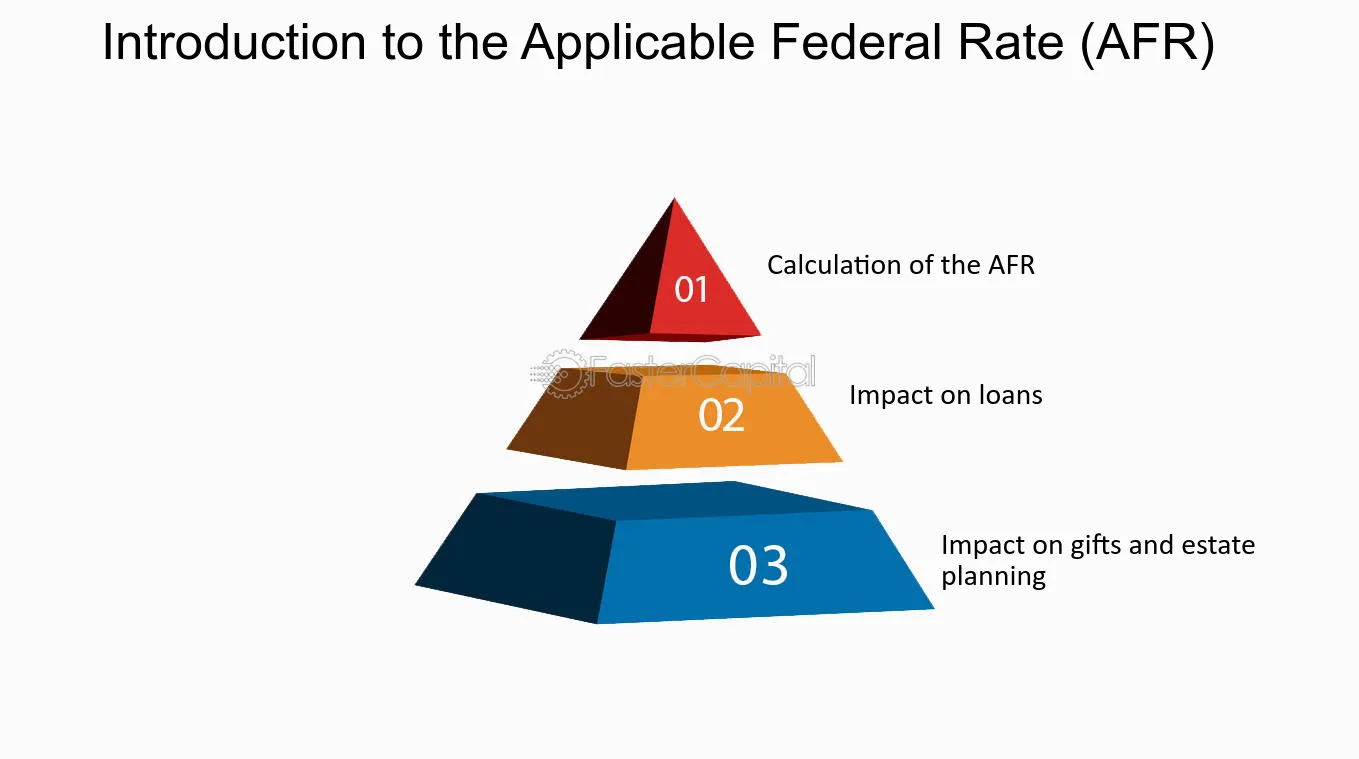What is the Applicable Federal Rate (AFR)?
The Applicable Federal Rate (AFR) is a term used in the United States to refer to the minimum interest rate that must be charged on certain loans or financial transactions. It is set by the Internal Revenue Service (IRS) and is used to determine the imputed interest on loans, such as those between family members or below-market loans.
The AFR is important because it helps prevent tax evasion by ensuring that loans are not given at below-market interest rates. If a loan is given at an interest rate lower than the AFR, the IRS will impute interest on the loan and treat it as if the lender had received interest income. This imputed interest is then subject to tax.
The AFR is also used in other financial transactions, such as determining the value of annuities, valuing charitable remainder trusts, and calculating the present value of certain future payments. It is updated monthly by the IRS and is based on the average market yield on outstanding marketable obligations of the United States government.
There are three different AFR rates: short-term, mid-term, and long-term. The short-term AFR is for loans with a term of three years or less, the mid-term AFR is for loans with a term between three and nine years, and the long-term AFR is for loans with a term longer than nine years.
How to Use the Applicable Federal Rate (AFR)

The Applicable Federal Rate (AFR) is an interest rate set by the Internal Revenue Service (IRS) that is used to determine the minimum interest rate that should be charged on certain loans. It is important to understand how to use the AFR to ensure compliance with tax regulations and to avoid any potential penalties.
Here are the steps to follow when using the Applicable Federal Rate:
- Determine the type of loan: The AFR is applicable to various types of loans, including intra-family loans, loans to employees, and loans used for estate planning purposes. Identify the specific loan type to determine which AFR to use.
- Check the current AFR rates: The IRS updates the AFR rates on a monthly basis. Visit the IRS website or consult a reputable financial source to find the most current AFR rates.
- Select the appropriate AFR rate: Once you have identified the loan type and checked the current rates, choose the AFR rate that corresponds to the length of the loan. The AFR rates are categorized by short-term, mid-term, and long-term loans.
- Calculate the minimum interest rate: Use the selected AFR rate to calculate the minimum interest rate that should be charged on the loan. The AFR serves as a benchmark to ensure that the interest charged is not below the minimum required by the IRS.
- Document the loan terms: It is crucial to document the loan terms, including the interest rate, repayment schedule, and any other relevant details. This documentation will serve as evidence of compliance with the AFR requirements in case of an IRS audit.
- Monitor and adjust the interest rate: The AFR rates may change over time, so it is important to monitor the rates regularly. If the AFR rates increase, you may need to adjust the interest rate on the loan to ensure compliance.
By following these steps, you can effectively use the Applicable Federal Rate (AFR) to determine the minimum interest rate that should be charged on loans. This will help you comply with tax regulations and avoid any potential penalties or issues with the IRS.

Emily Bibb simplifies finance through bestselling books and articles, bridging complex concepts for everyday understanding. Engaging audiences via social media, she shares insights for financial success. Active in seminars and philanthropy, Bibb aims to create a more financially informed society, driven by her passion for empowering others.
